If you don’t have one already, there’s no better time than now to treat yourself to a kitchen scale. Seriously, ask Santa. A kitchen scale is one of the best tools a baker can have, and I am patiently waiting for the day when all cookbooks have weight measures rather than just volume. It is a day that will probably never come, but it’s nice to think about.
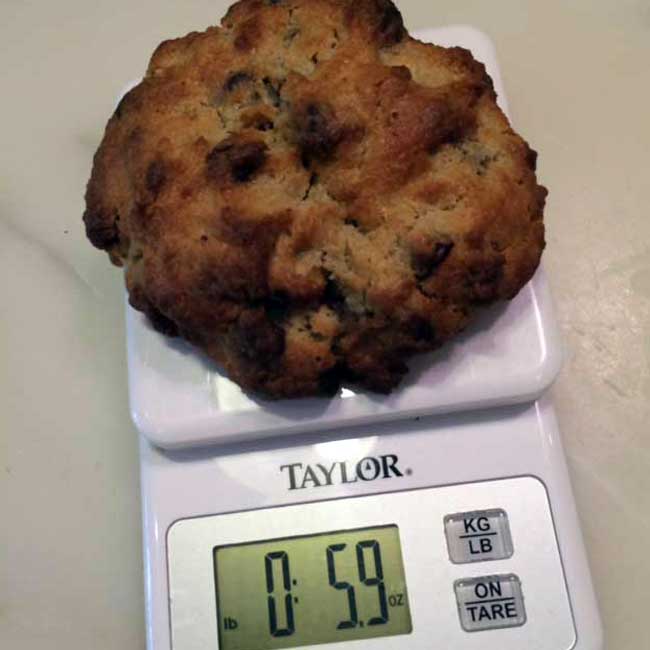
Why Weigh Ingredients?
Volume weights, and by that I mean cups and spoonfuls, are fine for certain liquids. But when it comes to weighing things like flour, brown sugar and even certain grains, a scale is your best friend.
A simple cup of flour is the best example. When you spoon flour out of a canister and gently sweep the top, it should weigh somewhere in the ballpark of 4 ⅜ to 4 ⅝ ounces. As a rule, I use 4 ½ ounces. If you scoop your flour directly out of the canister or pack it into the measuring cup or even spoon it with a heavy hand, it can weigh up to 6 ounces. So if you are scooping and or spooning heavily, you are using up to an extra ¼ cup PER CUP flour. This makes a big difference in cookies and especially cakes.
Different flours have different weights, so yes. You have to memorize them or keep labels handy until you do. Different sugars (brown vs. granulated) have different weights as well.
One you memorize weights of things, your life will be so much easier because you can throw a bowl on the scale, set the tare to zero and dump, scoop or pack it into the bowl until you get the proper weight. There’s no question (provided your scale is balanced….and it will be) as to the proper measurement.
Another thing a scale will help you with is measuring sticky, messy things such as peanut butter and shortening. Again, put your bowl on the scale and spoon in the proper weight (use the label as a guide) and just weigh it all out.
Using a scale is one thing I do that makes baking and clean-up simple and more fun. Not to mention, less messy. I don’t have any particular brand recommendations, so if anyone does, please let us know. I’ll probably buy whatever has the best ratings. I’m in the market for a new one because my old Terraillon brand scale stopped measuring in grams. I like having both gram and measurement weights.

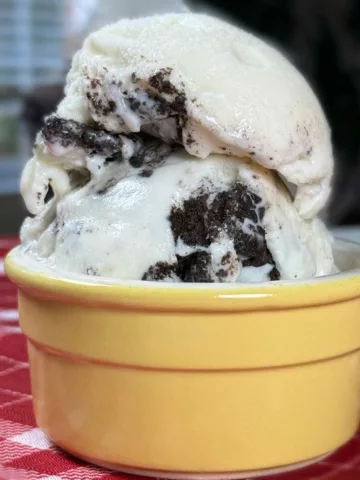
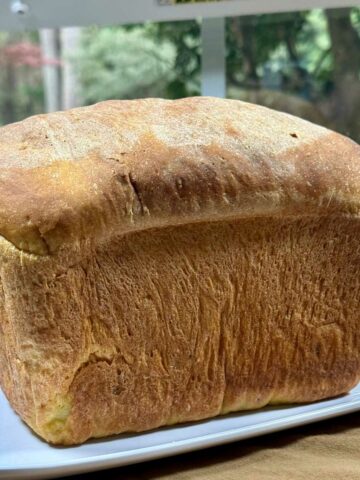
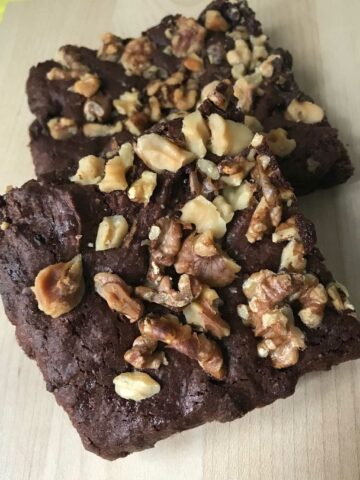
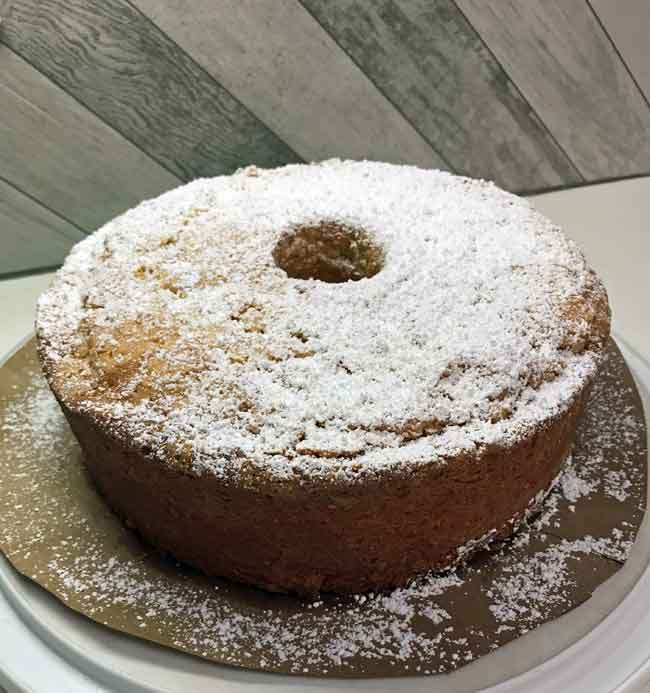
Anonymous says
I could use a cheat sheet for my Terraillon under 11 lb kitchen scale.
Deb says
Loved my Salter scale until it quit working recently after about a year and a half of ordinary use. Will be searching for a new brand to try.
Eliane says
Hi Anna, Thanks for that - will give these a go as they sound gorgeous. I tried out your lovely Sour Cream Chocolate Cookies at the weekend, having converted the units to grams. You can read about it on my own blog - still can't the hang of these cups! Good thing cookies aren't too complicated...
Anna says
E, thanks for the suggestion. I think I will start adding weights to recipes. It's not going to happen at all at once (unless I find some fabulous widget that will do it for me), but I can easily add weights in parenthesis next to the volume measurements. Not necessarily next to things like chocolate chips and vanilla, but to the crucial components of the recipe such as flour, fat and sugar.
For instance, the Tex Mex cookie recipe would look like this.
Tex-Mex Chocolate Cookies
2 cups (9 oz) all purpose flour
1/2 (1 1/2 oz) cup cocoa powder
1 tsp baking soda
1/2 tsp salt
3 tsp cinnamon
1/4 tsp chipotle powder
1/4 tsp nutmeg
1 cup (8 ounces) unsalted butter, softened
3/4 cup (5.25 oz) granulated sugar
1/2 cup (4 oz) packed light brown sugar
1/4 cup (3 oz) honey (local honey if available)
3 tsp pure vanilla extract
2 large eggs
1 12-oz. pkg semi-sweet chocolate chips
2 cups pecans, roughly chopped and toasted
Cinnamon sugar for coating:
1/2cup granulated sugar
1 tsp cinnamon
Preheat oven to 375 degrees. Mix flour, cocoa, baking soda, salt and spices together in a medium bowl.
In a separate large bowl, cream butter with sugars, honey and vanilla extract. Add eggs, one at a time. Slowly incorporate dry mixture into batter. Stir in pecans and chocolate chips.
Chill batter in refrigerator for approximately 15 minutes. Roll into tablespoon-sized balls (1 ½ inches, +/-) and coat with cinnamon sugar coating, then place on cookie sheets that are greased or lined with parchment or silpat. Bake for approximately 10 minutes or until outer surface begins to crack. Placed unused raw batter back in refrigerator between batches. Cool cookies on a wire rack before storing in an airtight container. Yields approximately 3 dozen cookies.
Eliane says
I have always wondered how the cups system works - it just seems so inaccurate and confusing and how do you squish butter in a cup and for that matter, what on earth is a stick of butter? But you see, I'm British and was raised on weights - imperial (lbs and oz) and now metric - so whenever I see an American recipe, it's like reading a foreign language. Which is very frustrating as we make biscuits over here which are definitely not the same as cookies and so all the best cookie recipes are from you guys. I am therefore relieved to see that the system frustrates you too!
If you are looking for weights and measures in your books for non-cookie recipes then buy them from us! I suppose the question is when Jamie Oliver and Nigella Lawson et al. get published in the States, do they change the measurements to cups?
And in the meantime, in the interests of entente cordiale and spreading the wonders of the American cookie around the world more easily - any chance of adding weights to your recipes? Because even with my cups I just don't think I'm going to get the hang of this thing. I realise asking for Centigrade as well as Fahrenheit may be going a step too far...? Back to my conversion tables.
Katy says
Anna,
Yes, that's the scale. I cannot recommend it highly enough. The code system is genius. It comes with a handy single sheet of codes you can keep right next to the scale for easy access.
Katy
Julie O'Hara says
It's great that this post has so many comments. I totally, wholeheartedly agree that cookbooks should have both weight and volume measures! Baking with a scale is so simple!
Anna says
Katie, I guess this is the one you have.
http://www.amazon.com/gp/product/B000JVCQPC/ref=reg_hu-wl_item-added
Emiline says
I like mine for weighing chocolate. Thought I'd throw that in there.
Katy says
Anna,
I've been using a scale for 20 some years and bake almost daily. My favorite Salter Aquatronic died a couple of weeks ago after about 7 years of faithful service and I did extensive research to find a new scale. I like a scale that weighs both dry and liquid ingredients. I ended up with the Escali Pana scale. It's the Mercedes Benz of kitchen scales. Designed by Escali with the bakers at King Arthur. Available on their website but I found it cheaper at Everything Kitchens.I am thrilled with this new scale. It has one hundred codes for common baking ingredients, weighs volume automatically and is accurate to 1/2 Tablespoon. By the way, I have been making fantastic cookies from Klivans Big Fat Cookies book.
steph says
I have been obsessed with the weights and measures of baking goods since reading your blog earlier today. I've scoured through all my cookbooks and was a bit surprised that something like a "cheat sheet" doesn't exist. I found something similar on the internet at culinarycafe.com. So, I got out my scale and made a batch of mexican wedding cookies (recipe from America's test kitchen.) I don't know if the cookies were yummy from measuring the ingredients or because the recipe called for extrafine sugar, anyhow I'm gonna keep out that scale! (forgot I had it) thanx!
Love, Love, Love your website!!!!
Brenda says
Thanks for the great info Anna! I should start weighing my ingredient because even measuring cups aren't all that accurate considering how many shapes and sizes there are. I know my large glass measuring cup/bowl is not accurate to what is listed on the side.
Could you possibly write about the correct use of different kinds of measuring cups/spoons for liquids, solids, etc? That may be helpful to new bakers who don't have a scale. 🙂
Anna says
Well, maybe it's already been done, but it would be nice if that master cheat sheet were built into the scale. That is, a digital listing of weights/volumes of basic baking items.
Maggi says
Oh, I'm with ya! I love my kitchen scale, and I have been making notations in my cookbooks for years where I list the weights next to the measurements. I whip out baked goods so much faster these days because weighing is faster than measuring. Never mind that there is less to clean!
But I too wish there was a 'master cheat sheet' of the average weight for a cup of flour, sugar T of peanut butter etc.
Joe says
I also wanted to mention that a lot of the cookbooks - especially ones that have/are coming out recently - are now telling you how they measure their flour whether it be the weight-y scoop and sweep or fluff and lightly spoon method. Though, I just wish they would add the weights!
Joe says
I use my scale SO many times throughout the day!
I used an old salter for the longest time, but a few years ago I switched to the "MyWeigh" brand of scales - it is one that Rose Levy Beranbaum recommends. Here is a link to the one I use http://myweigh.com/mediumscales_KD7000.html
It makes life so much easier!
Dawn says
I agree with Carol . . shouldn't there be a list published somewhere of weights of commonly used baking products? I love my kitchen scale!
Love your site, Anna!
Laurie L says
Kitchen scale--also handy for weighing packages and printing postage on line so that you don't have to stand in line at the Post Office---especially at this time of year!!!
Happy Holidays!!!!
Anna says
Lindsay, I think most professional recipe developers are aware of this. However, if some average person develops a recipe and puts it in, say, a school cookbook, it can be hit or miss. But I think most experienced bakers are becoming more aware of this.
Lindsay says
Anna- this assumes that the people developing the recipes know are "spooning and sweeping" and weighing too...do you think that's true? I always wonder if I'm taking the extra time and all they did was just scoop their measuring cup in the flour!
Jennifer says
I love my kitchen scale. Not only is it a much more accurate way to measure dry ingredients, it really makes measuring them much easier to me. Using a scale is one of the things that I'm adamant about in my baking advice.
Jen says
Timely. . .I just ruined my scale by keeping it on top of the toaster oven. I need to add a new one to my wish list.
Janice says
The scale is definitely your very good friend, especially for baking.
Chelsea says
Hmm, I'm not sure how much easier that would be for me. I'm just now getting down my measurements. (I'm HORRIBLE with math, haha!) I finally went out and bought a 1 cup measuring cup because I could never get the 3/4ths of a cup right. lol And I had to buy a measuring cup that had spoon measurements in it. oh well. 😉
Carol says
I love using a scale to bake, it makes everything so much easier! I just wish I could find a good chart of different flours and their weights -- and I also wish that more recipes listed weight instead of volume.
Anna says
Ack! Welcome to my nightmare.
Don't worry. I haven't had that kind of scale in the house since, uh, 1991.
Kathy says
Whew! For a minute there, I thought you were talking about putting a SCALE in the kitchen for weight issues during the holidays.
As if I didn't have enough anxiety already! 🙂 Now I need a cookie!